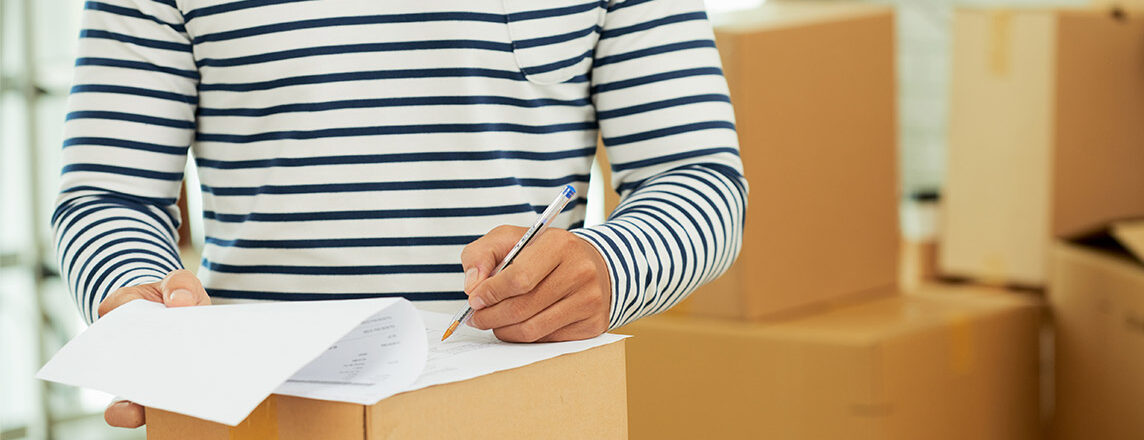You understand all too well, as a small business owner, that time is money. Yet time and money are two resources that the majority of small business owners find difficult to come by. Go figure. However, you can find both if you optimize your freight shipping using best practices and freight packaging tips.
Some of the best freight packaging advice has been provided by CHP Logistics in the hopes of saving you time, minimizing product damage, and streamlining the freight packaging procedure. Continue reading to learn more about freight packaging advice, and do not be afraid to get in touch with CHP Logistics’ customer service for more advice.
Use Top-Notch Boxes for Shipping Packaging
It is crucial for small business owners to find ways to save money whenever and wherever they can. However, selecting less expensive and subpar boxes will typically cause more harm than good. Boxes that are well-built and brand-new will offer significantly more protection than boxes that have been recycled or used again.
Boxes that have been previously used or recycled frequently sustain more damage and lose strength with each use. Additionally, they can provide even more protection if you have the money to purchase extremely robust double wall boxes.
If you do choose to reuse the boxes, be sure to thoroughly check each one for rips or holes. To avoid them being delivered to the incorrect location, make sure you remove any outdated labels from the box. We’ll discuss labels in more detail below.
Should You Choose a Pallet or Crate?
Knowing when to use a pallet or crate is necessary for proper packaging. Both shipping crates and pallets will provide the highest level of damage protection, expedite the unloading and loading process, and enable carriers to make the most of trailer space.
But wooden crates used for shipping can be useful for organizing cargo. Pallets are lightweight platforms that are used to package boxes and freight. Shrink wrap, stretch wrap, or another type of wrap can be used to secure the boxes after they have been placed on the pallet. The majority of carriers demand that pallets be secured with shrink wrap or stretch wrap, as appropriate.
– Use a Crate for Fragile Items
Heavy boxes are a great addition to crates because they can help organize and safeguard your freight. When using a crate, be sure to put each fragile and non-fragile item into a different crate. In order to prevent your shipment’s contents from shifting during shipping, you can reduce empty space by adding more protection or cushioning materials. Any fragile item needs to be bubble-wrapped tightly.
– You Almost Always Use a Pallet
Pallets are advised for the majority of shipments, regardless of whether they are fragile or not, although this can vary from carrier to carrier. Even when shipping just one box, carriers advise using pallets. Always place boxes on a pallet that has enough space to hold everything when you stack them on the flat surface of the pallet. After you have safely stacked each box, fasten the shipment with straps or a cover.
– Always Choose the Right Pallet
The first step in the process is choosing the appropriate box. It’s imperative to choose a functional pallet. If you choose a defective pallet, it might not be strong enough to support the weight of your cargo. And this can lead to costly damaged freight.
The pallet should be sturdy and flat prior to placing anything on it. Make sure to avoid any shipping pallet that doesn’t have a bottom board because these pallets lack the ability to evenly distribute weight.
Avoid using corrugated pallets, as they have a tendency to degrade quickly, as an added bonus. The right pallet will give you greater assurance that your cargo is secure and that it can withstand the stresses of packing and shipping.
– Ensure Accurate Labeling
The efficiency of your boxes can be greatly increased and handling can be reduced when they are properly labeled. Because of this, each box in your shipment—especially those containing fragile goods—must be properly labeled before pickup.
If they become separated from the pallet during the process, doing this can help ensure they are correctly sorted and delivered to the correct address. The shipper’s and consignee’s names, contact information, and addresses should appear on every label.
Each box must have a label that is simple to read, clear, and legible. Additionally, any additional labeling or special instructions, such as those for fragile items, should be noted. Ensure that the labels are positioned on two adjacent sides when dealing with “Top Heavy” or fragile items.
– Proper Packaging Tips Include Sound Pallet Stacking
The likelihood of your load failing and coming undone greatly increases when heavy and light boxes are improperly stacked. Additionally, incorrect stacking can result in a 60% reduction in the stability and integrity of your cardboard boxes. Assemble your boxes neatly and in a straight line on the pallet to avoid this. Additionally, it is crucial to distribute weight as evenly as possible. Avoid having boxes hang over the edge of the container when shipping freight.
While it’s perfectly fine to get boxes close to the edges, don’t cross the line. If your boxes overhang, it can expose them to damage while decreasing their strength significantly. At the same time, you should avoid using the interlocking pattern for stacking boxes. Doing so can further reduce the strength of boxes.
Once the boxes are correctly stacked, secure the load and make sure it is packaged well by using shrink wrapping, stretch wrapping, and other packing materials. Find out more about ideal pallet stacking procedures.
– Maintain Freight Packing Materials in One Place
If you go to any sizable, well-known warehouse, you will see that they keep all of their freight shipping supplies in one general area. Your company might not, however, have a sizable warehouse with a separate shipping station. However, if you organize your packaging materials well, you can put them all in a useful storage area. So there is no need to waste time looking for boxes, bubble wrap, or shrink wrap.
Additionally, in business, time is money. As a result, think about putting freight shipping supplies in a storage bin or other kind of container. You can consolidate common packing supplies like:
- • Packing peanuts
- • Individual boxes
- • Bubble wrap
- • Shrink wrap
- • Stretch wrap
- • Duct tape
- • Box cutters
- • Scissors
- • And more
Contact CHP Logistics
At CHP Logistics, we are the top full truckload and LTL shipping company in the New York area. We have consistently delivered on-time LTL freight shipments for business owners throughout New Jersey, New York, and more.
Contact CHP Logistics today for fast freight shipping and affordable LTL shipping rates.


